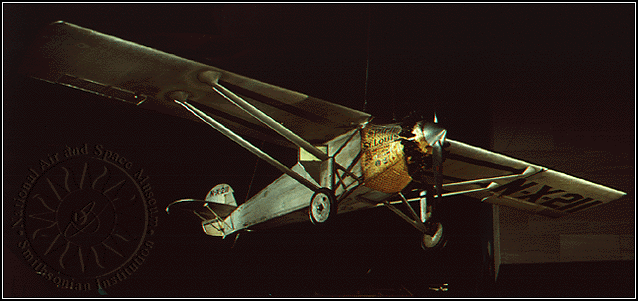Lift/Velocity
Relationship Problems
If
so instructed by your teacher, print out a worksheet page for these
problems.
Open the slide
called Velocity Effects (with text)
and read the explanation on how lift varies with the square of the velocity.
At the bottom of
the Mass and Velocity Effects slide is a problem that supplies weight
and velocity data. Let's work through that problem and discover the
effect a large change in weight has upon velocity.
The problem gives
us a 15,000 pound airplane with 5,000 pounds of fuel traveling at 250
mph. The lift must equal a total weight of 20,000 pounds, which is equal
to the velocity squared multiplied by some constant (assuming constant
air density) . Therefore, we have L = k V2. Solving for k,
k = L/ V2 , and substituting in our data, k = 20,000 pounds/
(250 mph)2 = 0.32 pounds-hours2/mile2.
Now we wish to know the velocity the pilot should maintain to hold the
same altitude after he has burned half of his fuel. Our weight (and
necessarily lift) becomes 17,500 pounds, which is then equal to 0.32
V2. Solving for V, V = (17,500/0.32)1/2 = 234
mph.

You may have been
wondering about the photo of the "Spirit of St. Louis" above. We will
now use our lift/velocity relationship information on an imaginary flight
in the Spirit of St. Louis where we again maintain altitude. Data needed
to continue is found at "Ryan,
Spirit of St. Louis." (http://en.wikipedia.org/wiki/Spirit_of_St._Louis)
- Find "k" as above
using the Spirit of St. Louis maximum velocity and the takeoff weight
less 20 kg (an arbitrary amount of fuel to attain maximum velocity).
Once you have determined k, write an equation for velocity as a function
of lift (as in our example). V= __________.
- Using a function
grapher, graph this equation (default window settings are acceptable).
Do you recognize the graph? It is a ______________.
- Now key in the
following RANGE window values: xmin=1000, xmax=2500, xscl=100, ymin=120,
ymax=220, yscl=10, and graph the equation. Because the domain and
range are limited to real Spirit of St. Louis values, the curvature
of the parabola segment is limited.
- Return to the
equation and solve it for lift. L= ________________. Graph the equation.
Then exchange the x and y values in the RANGE window; that is, key
in: xmin=120, xmax=220, xscl=10, ymin=1000, ymax=2500, yscl=100, and
graph. The parabola segment now opens upwards, instead of to the side.
Note:
You may wish to try this for other aircraft
|
